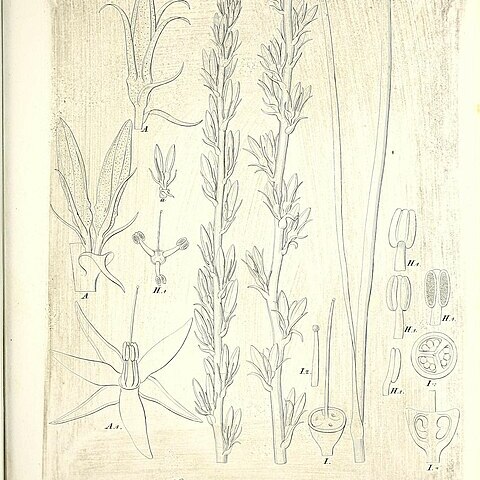A herb which keeps growing from year to year. It forms a bulb. Plants grow to 2 m tall. There are 3-4 leaves. These are 20-30 cm long by 0.1-0.2 cm wide. They are cylindrical and dark green. Plants flower after fire. The flower are on long slender flowering stalks. These are branched and 30-80 cm long. The flowers are 0.5 cm long and grey-brown. The flowers never open. Flowers are pollinated by native bees.

